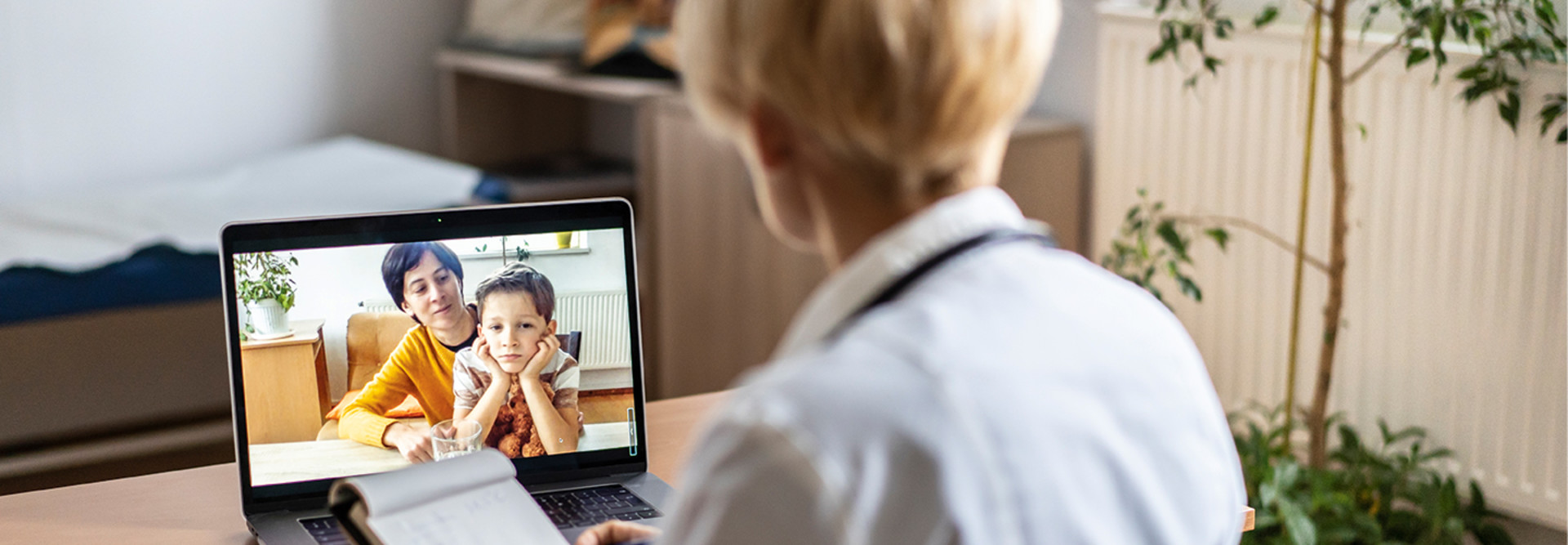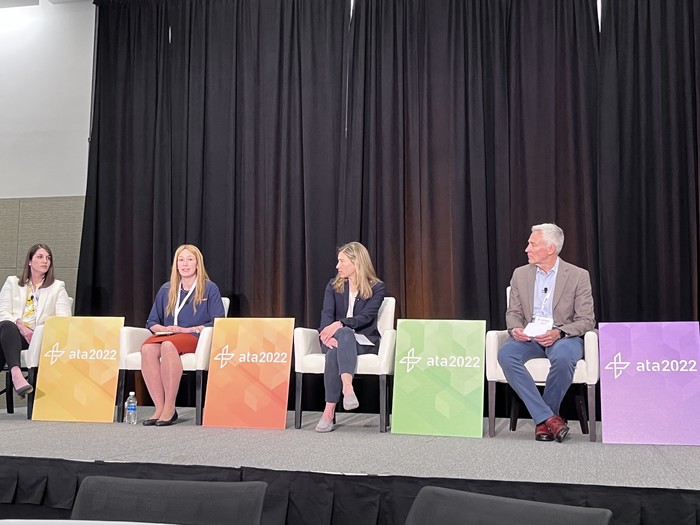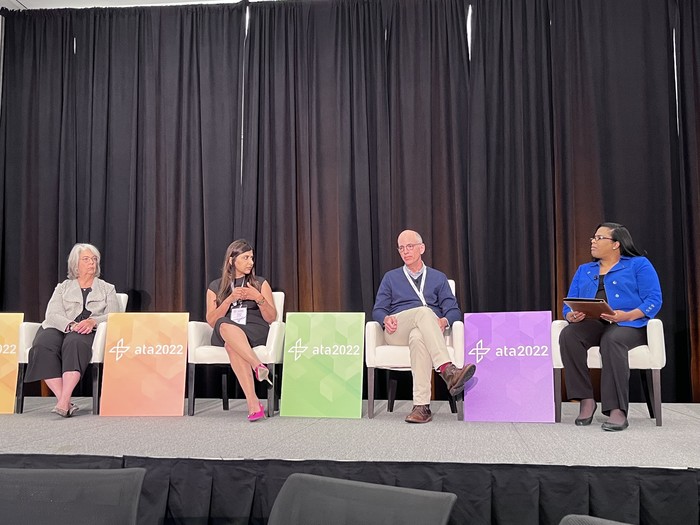Abigail Crawford, Telemedicine Nurse Practitioner at West Virginia University Health System; Dr. Jennifer Berkovich, Medical Director of Telehealth at KidzDocNow; Dr. Lindsay Jubelt, Chief Population Health Officer at Mass General Brigham; and David Icke, Vice President of Digital Health and Analytics Product at Humana discuss the evolution of virtual care in pediatrics at the “Telehealth in Pediatric Population Management” session at ATA2022.
Abigail Crawford, a telemedicine nurse practitioner at West Virginia University Health System, says WVU Medicine now has six telemedicine hubs in West Virginia to provide better access to people in rural and remote areas. Her organization is assessing which specialties are utilizing telehealth most and focusing on expanding the capabilities of each telemedicine hub.
Telemedicine can also facilitate complex care by making it easier for children to be seen by multiple specialists when needed, sometimes in one visit. In addition, Berkovich pointed out that telehealth can drive down unnecessary ER visits by triaging a patient’s condition and determining whether it could be handled in a virtual visit or requires immediate in-person care.
A tighter window of opportunity for early intervention is unique to pediatrics, said Dr. Saima Aftab, vice president of organizational initiatives and Nicklaus Children’s Pediatric Specialists chief of neonatology at Nicklaus Children’s Hospital.
WATCH: University of Miami Health System connects kids with healthcare using mobile clinic.
“Pediatric patients need development assessments with their primary care physicians to ensure their milestones are on track,” Aftab said. “As a parent, delays in access to care can be stressful. In our community in Miami, there are challenges to accessing care,” including transportation, lack of access to primary care physicians, social determinants of health and more.
Telemedicine has the ability to overcome distance barriers and better match children’s needs, she said.
Gigi Sorenson, corporate director of telehealth at Shriners Children’s, added that not all of a health system’s locations will have the same level of providers, and telehealth enables the sharing of resources across locations.
How Can Pediatric Virtual Care Be Improved?
In the past, many pediatric and general healthcare providers delivered care without understanding the needs of the patient, said Jubelt.
“There’s a huge opportunity for us to redesign the care delivery experience. Right now it’s still a visit-based experience,” she said. “However, families and patients want a more continuous experience. They want to send a message and get a message back and schedule visits on demand. We need to switch to have more of a relationship and on-demand experience instead of an episode- or visit-based approach.”
She also emphasized the importance of partnerships.
“Larger organizations tend to think they can build things and solve everything themselves, but it’s better if they don’t do that,” she said. “Stop being so inward-focused and be outward-focused, both with patient needs and by being a better partner.”













